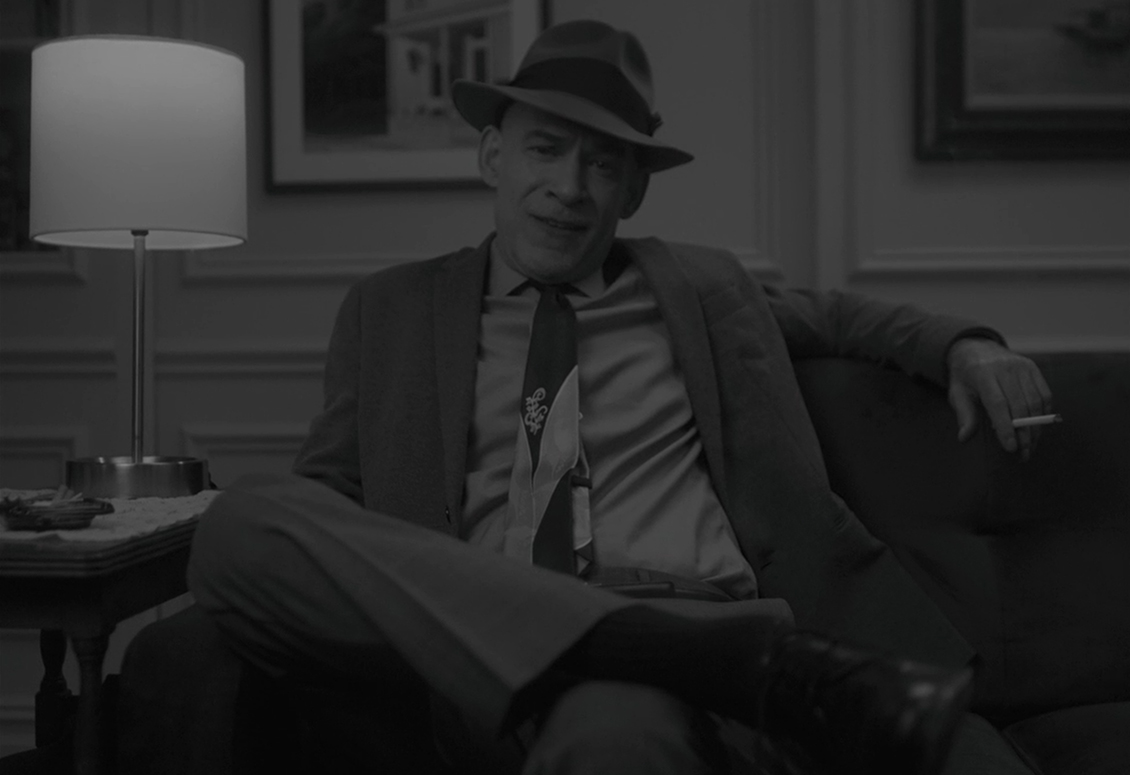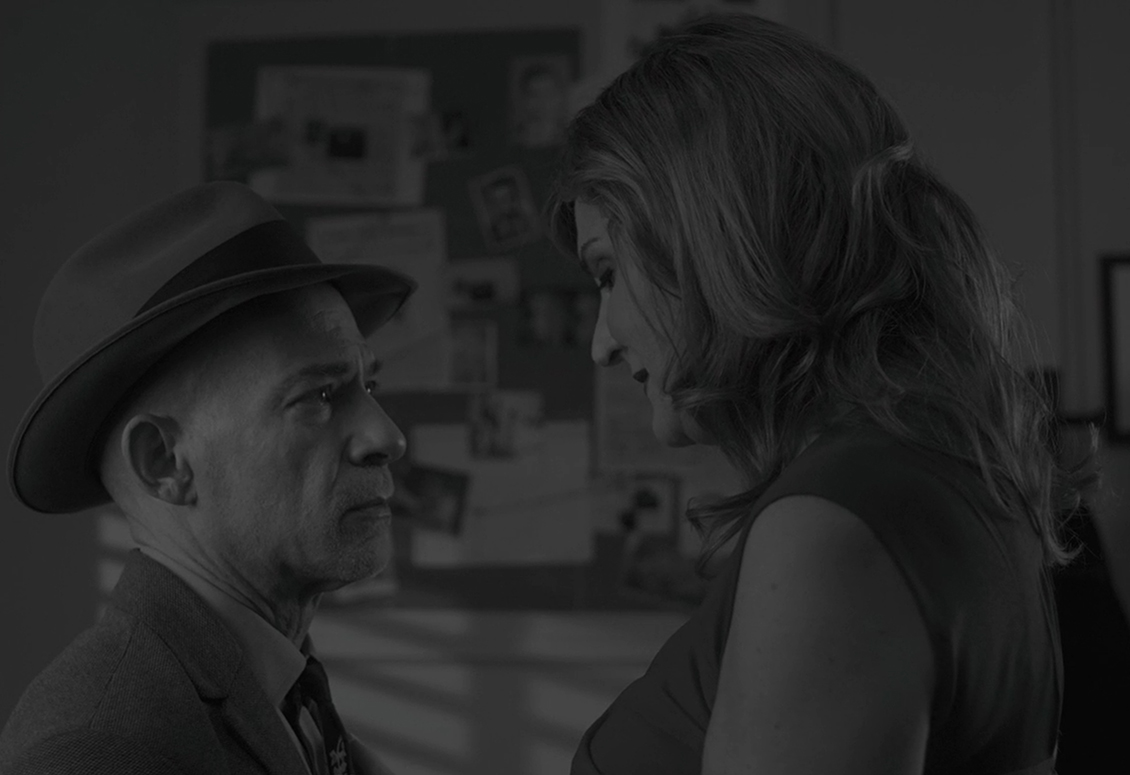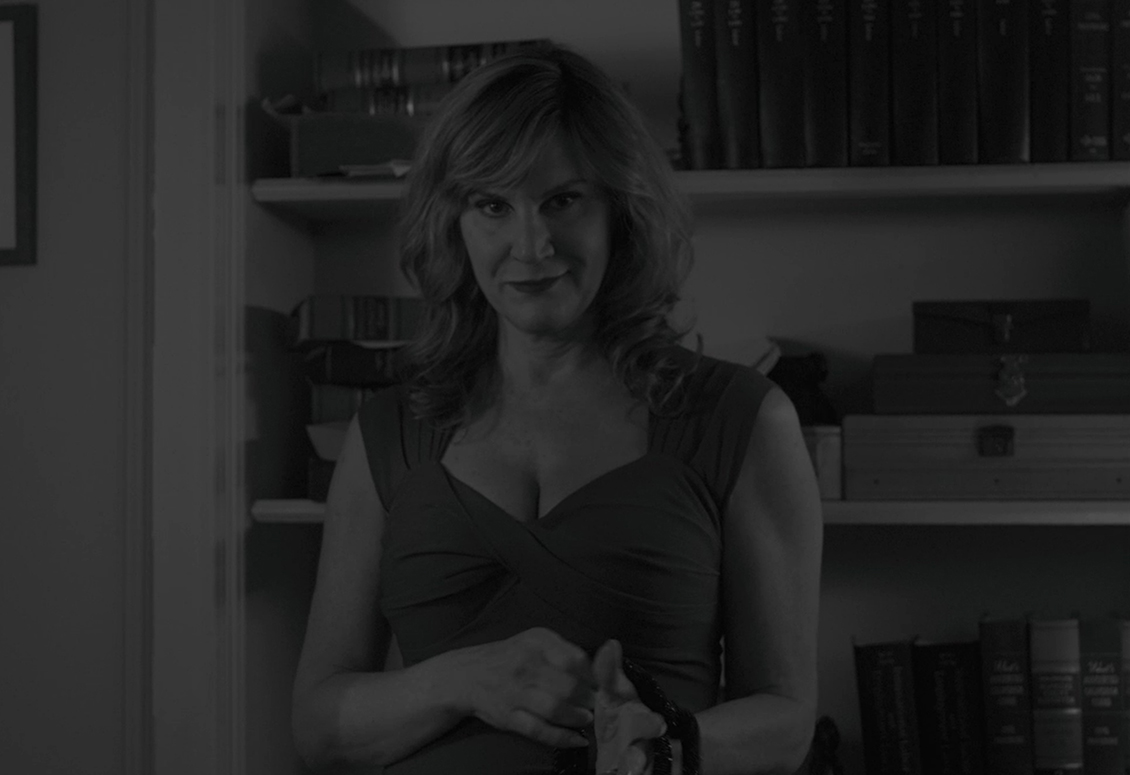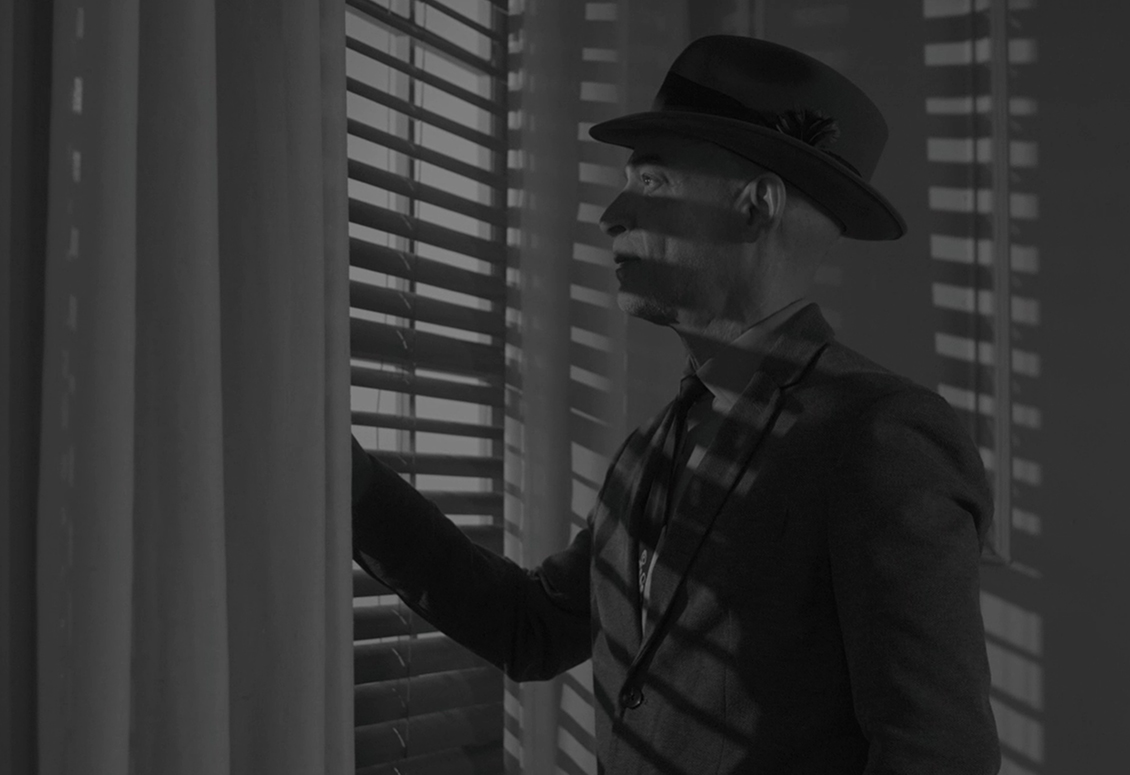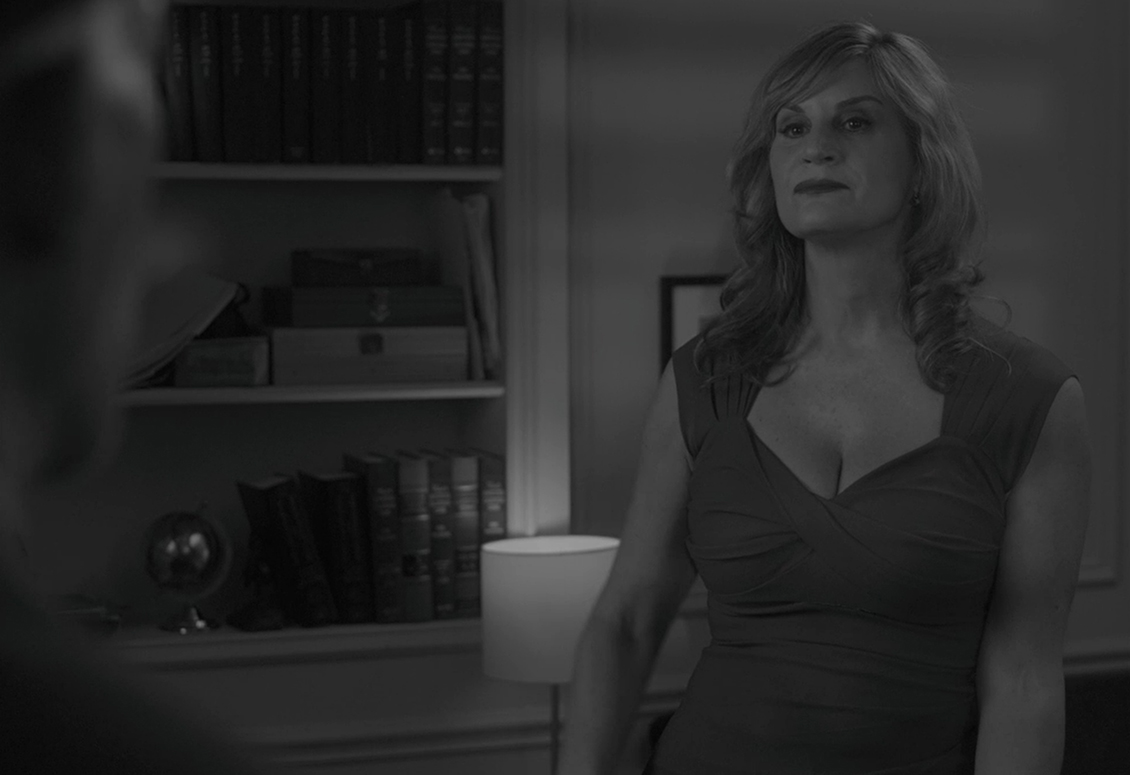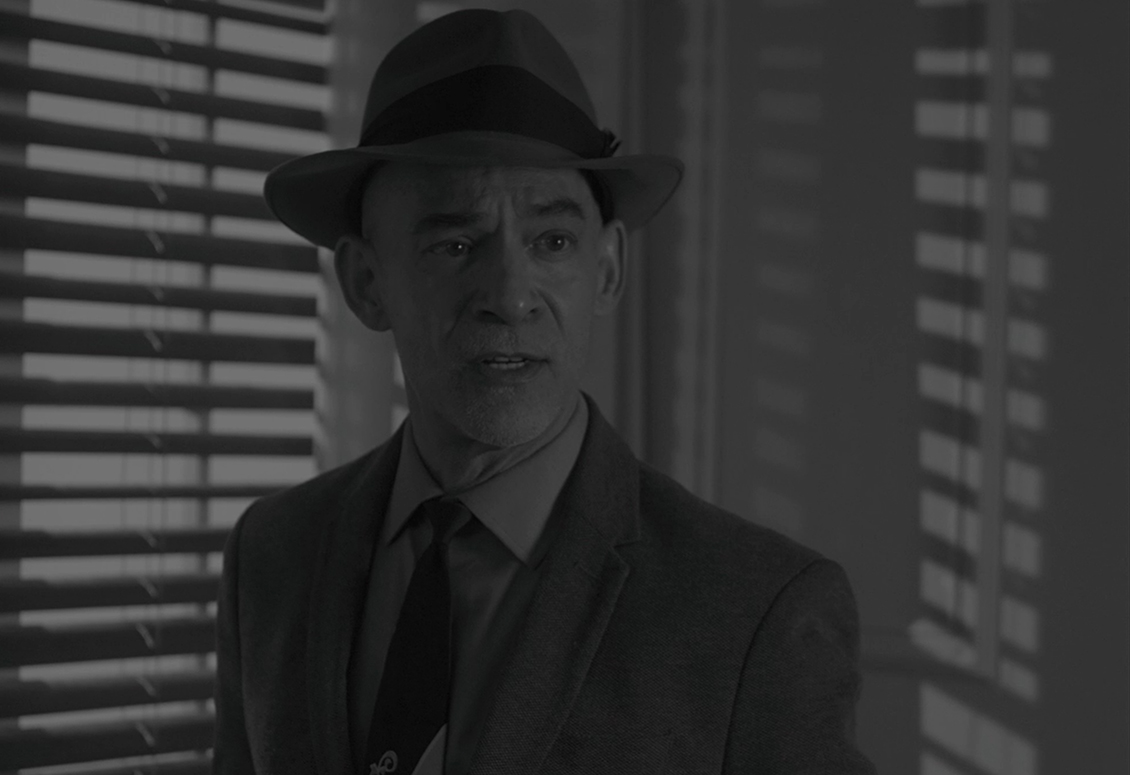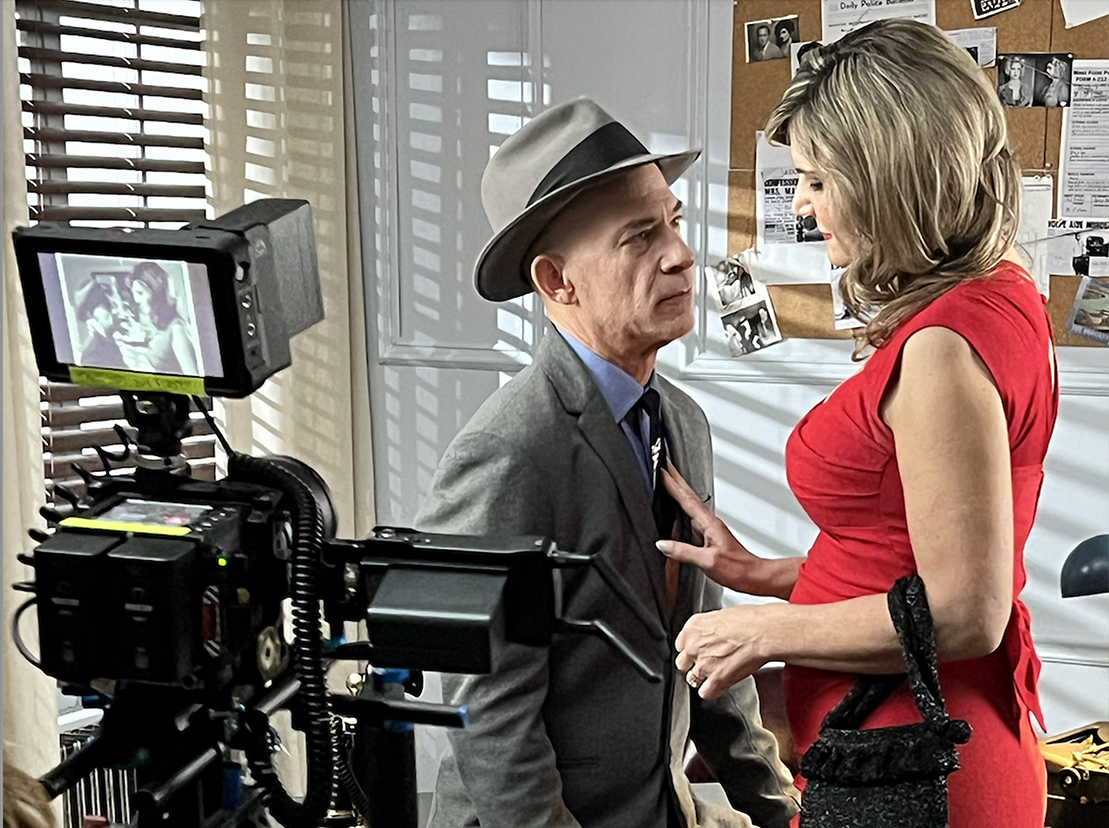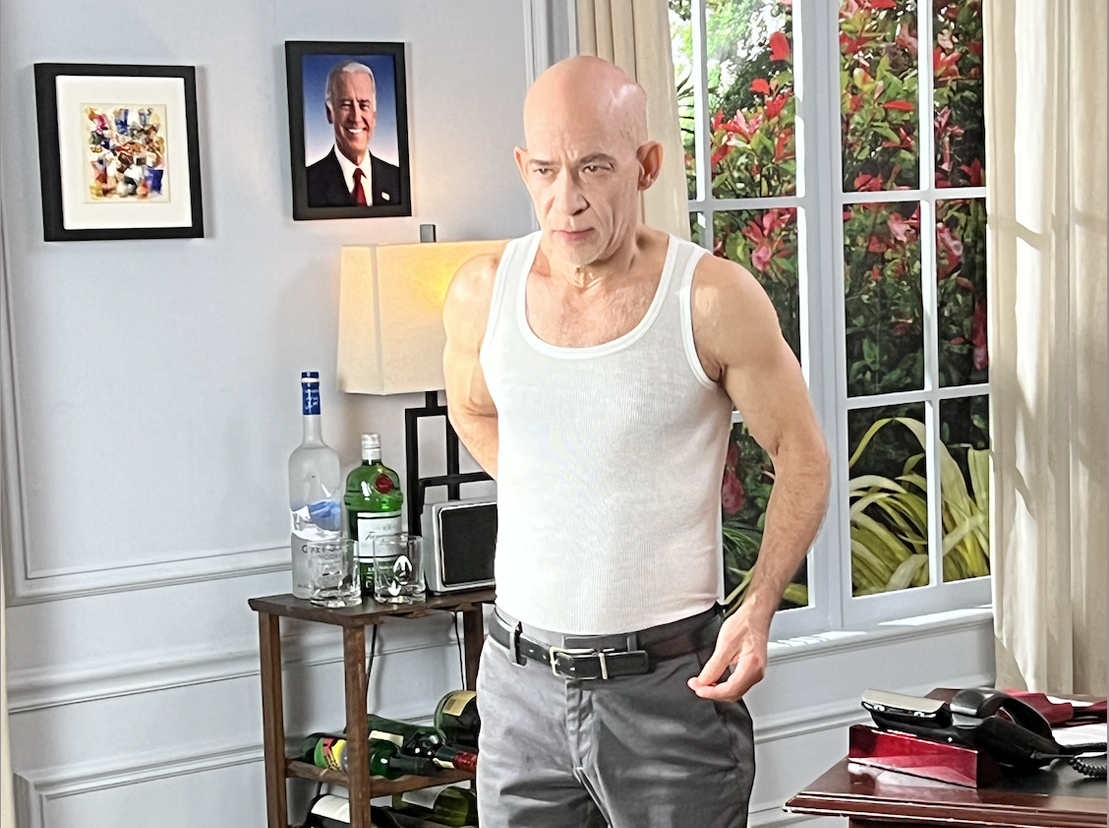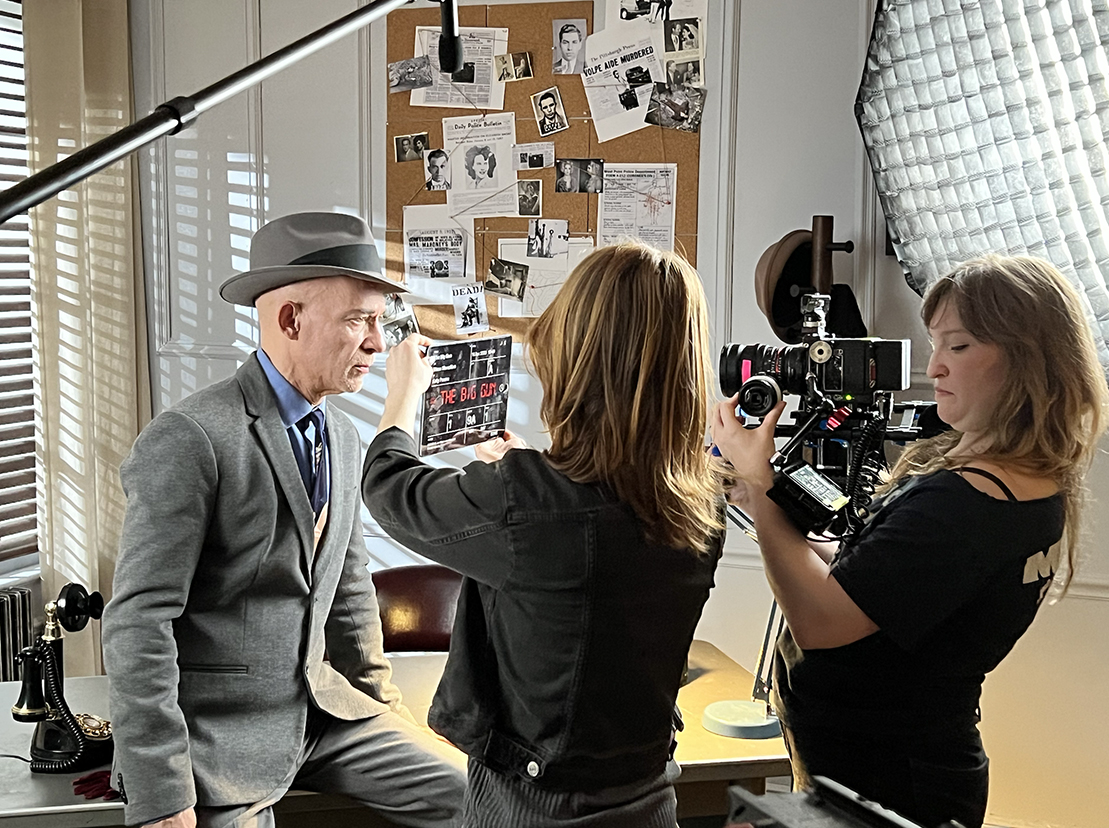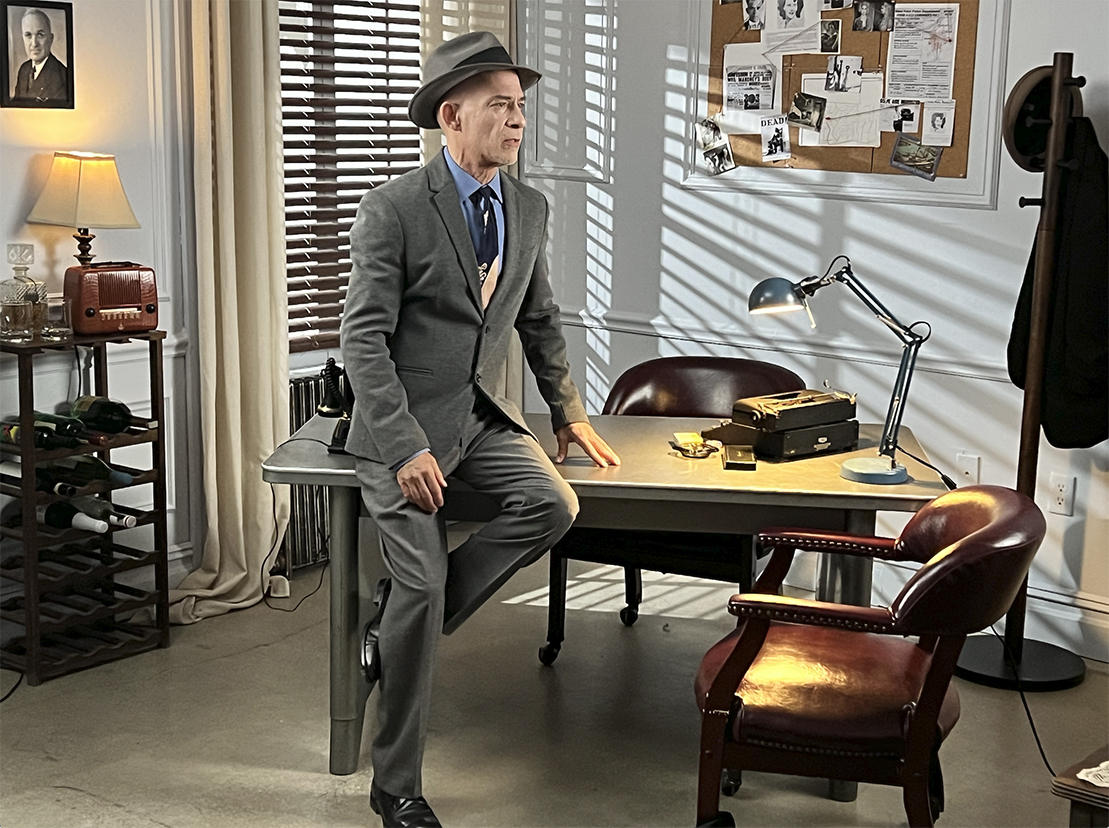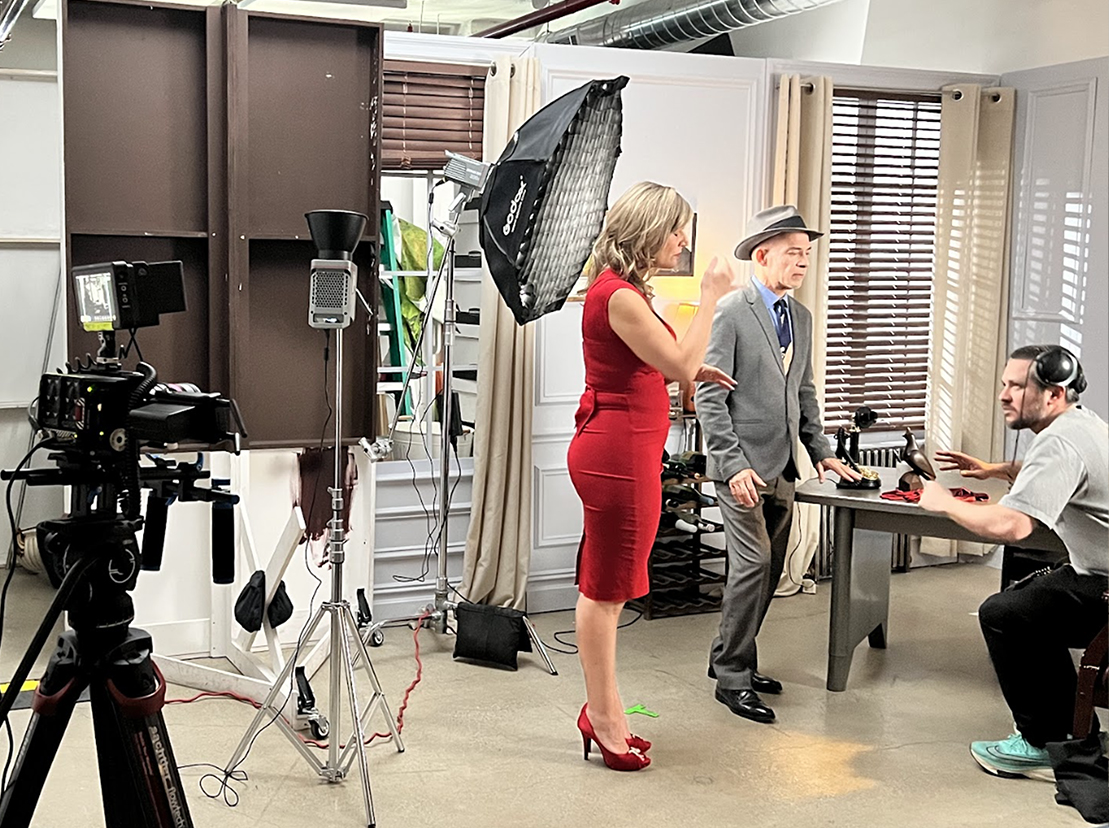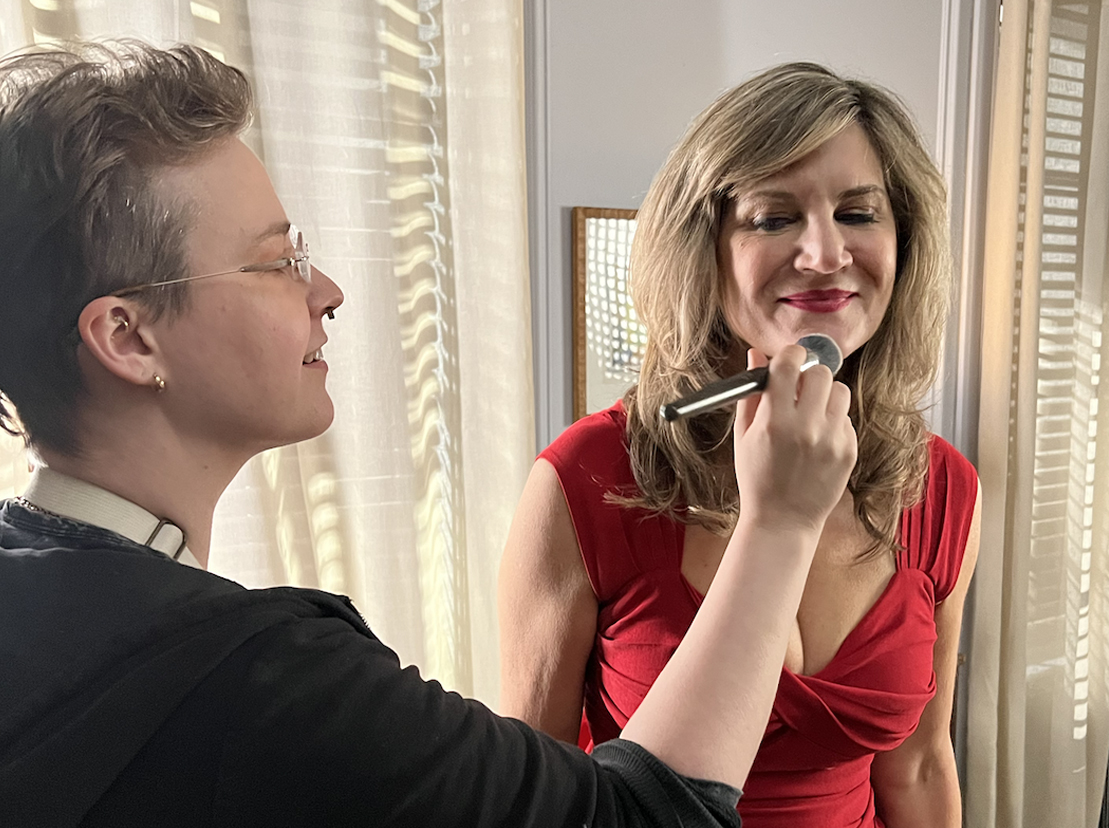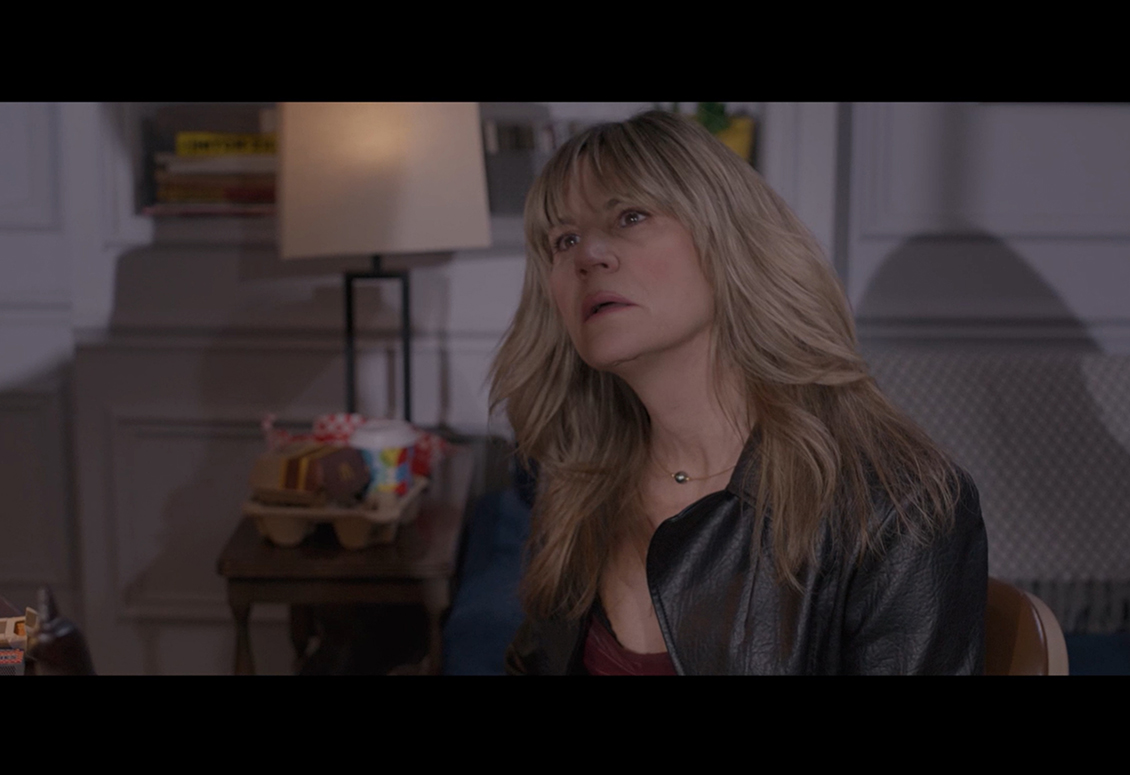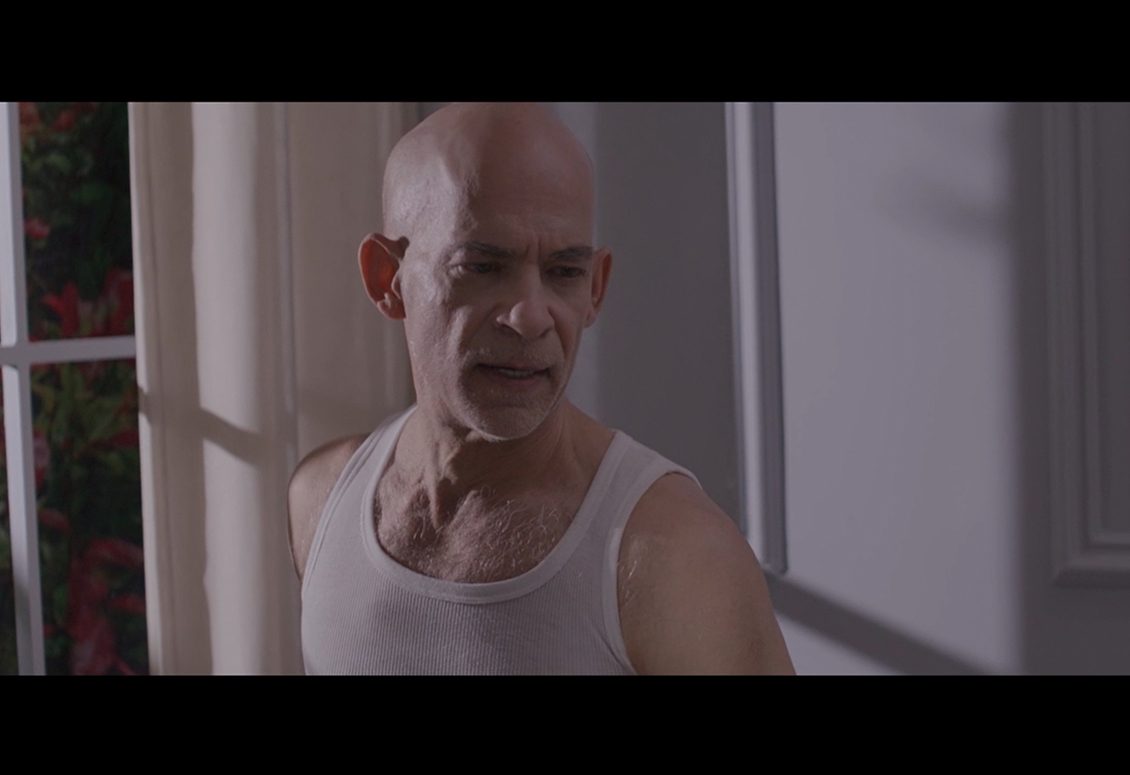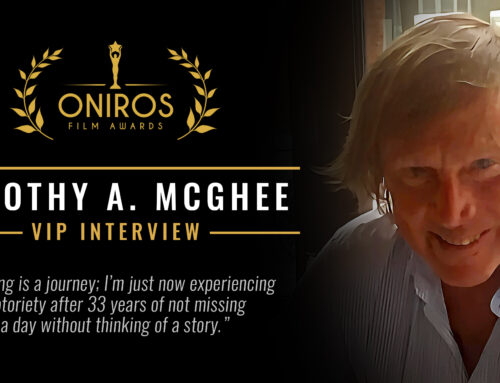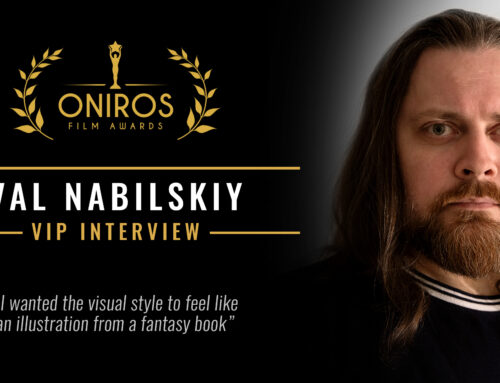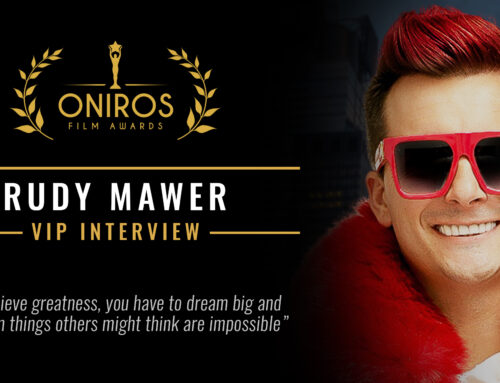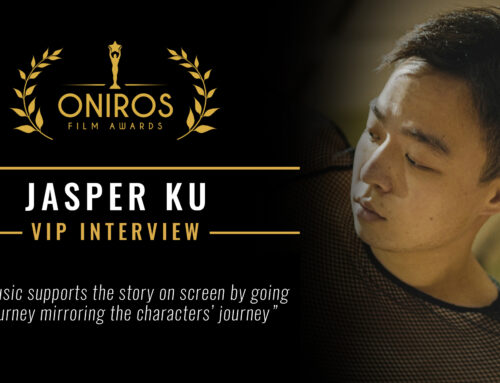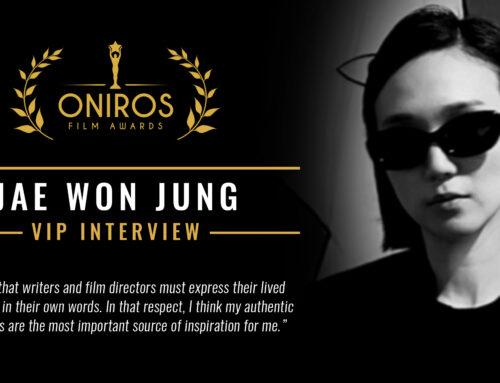BEYOND THE ONIROS FILM AWARDS®
VIP Interview with Jon Spano, writer, producer, and lead actor of the award winning short film ‘The Big Gun’
by Alice Lussiana Parente
Today, we introduce Jon Spano, a multifaceted talent who wears many hats as the writer, producer, and lead actor of short film: The Big Gun. In this interview, we dive into Spano’s journey – from his early beginnings and creative inspirations to his rise into the industry. We’ll also talk about his passion for the noir genre, and what lies ahead for his career. Enjoy!
1. Hi Jon! Congratulations on your awards at the Oniros Film Awards! When did you realize that you wanted to work in the film industry?
As a kid I was fascinated with old movies, including silents, and watched them late at night on weekends. The oldies aired mostly through local TV stations, often had bad reception, and starred Mary Pickford, Rudolph Valentino, Theda Bara, Douglas Fairbanks… My grandmother would still be up (but more likely dozing on the sofa) and we’d watch them together. At ten a.m. on Sundays, Sherlock Holmes movies with Basil Rathbone and Nigel Bruce aired. I just loved them. Mansions, mystery, and murder!
I remember seeing How To Marry a Millionaire on TV and had no idea who Lauren Bacall, Betty Grable, and Marilyn Monroe were. I was probably around nine. But it was the first time I became aware that the characters in the movies were actually actors playing roles, playing people who were not themselves, and that acting was a profession. I became aware of star power. I remember being confused when my aunt told me that Marilyn Monroe had died young from an overdose. How could that glowing on-screen vision no longer be alive?
The Midway, our local drive-in, screened three films in a row: The main feature, and two B-movies. The line-up would be, for example, The Man With The Golden Gun, Death Wish, and Dracula… A spy. A vigilante. A vampire. COOL! But it was 1974’s The Way We Were that made me gasp. The charisma and chemistry of its stars, the conflict of political beliefs verses their romance, and how those two elements made then destroyed a relationship. Redford and Streisand together, I mean…. WOW! There was something captivating about imaginary worlds and the experiences of other lives trapped inside impossible situations.
A few years after that, there were TV mini-series like Roots and Rich Man, Poor Man. And on the big screen, films like Julia, The Turning Point, The Exorcist, Annie Hall, The Poseidon Adventure… just so many amazing movies. And so many talented actors to discover. John Amos. Ruby Dee. Susan Blakely. Jane Fonda. Anne Bancroft. Gene Hackman. Diane Keaton. The list is nearly endless.
In ancient times, feature films would air on television after completing their theatrical release, and a re-release if the film was a mega-hit, which could be a full year or more. That’s how I first watched films ranging from The Godfather to The Parralax View – any film that went from big screen to small, including 1967’s greatest treasure (if not cinema’s itself), Valley of the Dolls. 😊
2. You are an actor and a dancer. Can you tell us more about your studies and background?
Oh, Alice, it’s such a long, boring story. I moved to New York at seventeen (with my high school graduation gift-money to get me through the rest of my life), and had no idea how much training was needed for the arts. We only see the best onscreen. So the art form always looks so, you know, “Oh, I can do that,” especially when you’re young and stupid. But over decades, I got the training. Still training. Always.
I start everything late: Dance at eighteen, writing at thirty-five, acting at fifty-five. I didn’t enter NYU (for my writing degree) until I was thirty-eight! But we start where we start, when we start. My career-path is non-traditional; definitely a journey I didn’t imagine, but one I’m grateful to have had. I’m a survivor.
I’ve had great teachers. I’ve had horrible teachers. The best teachers are hard on you by being generous with their knowledge and hopeful for your development. But “hard” doesn’t mean demeaning. I had an acting teacher in the late ‘80s (though not pursuing an acting career at the time) who made me want to kill myself after almost every class. Some of that was my hyper-sensitivity; but he was insulting in a personal way to most of the students. He didn’t type actors; he pigeon-holed them. It’s important to have teachers confident in their position and their reality, not frustrated and bitter over their own unrealized dreams, which creates a sad, alternative reality of their own design. The embittered teacher I mention had a roommate who became a star and won two Oscars.
Dance teachers are my favorite. The discipline; the daily commitment. Putting steps together with other steps that form a structure of a dance. Creating something through the mind and imagination, and then turning it into something tangible as executed through the body. It’s nearly the same as putting together the minutiae of a screenplay, from initial idea to filmable product. Screenwriting is to writing as ballet is to dance: they’re the hardest disciplines to excel at within their respective fields. Technical mediums in their development that must be humanized in their execution.
I love Christopher Walken’s approach to acting. He, too, is a former musical-theatre dancer who summons physical components of the characters he plays. When first studying a script, he looks only at his lines, doesn’t analyze, and knows next to nothing about the story, says his lines different ways. So there’s constant wonder without predetermination. His perspective on acting is crazy and I love it. Because Walken’s individual method is antithetical to how actors train and what we most revere: the acting process. I’ve let go of the idea that I need a formal process. My process is “just do the fuckin’ work.”
I trust my instincts more now. It’s just great. I’m glad I wasn’t successful at a young age. I’d be dead thirty years now.
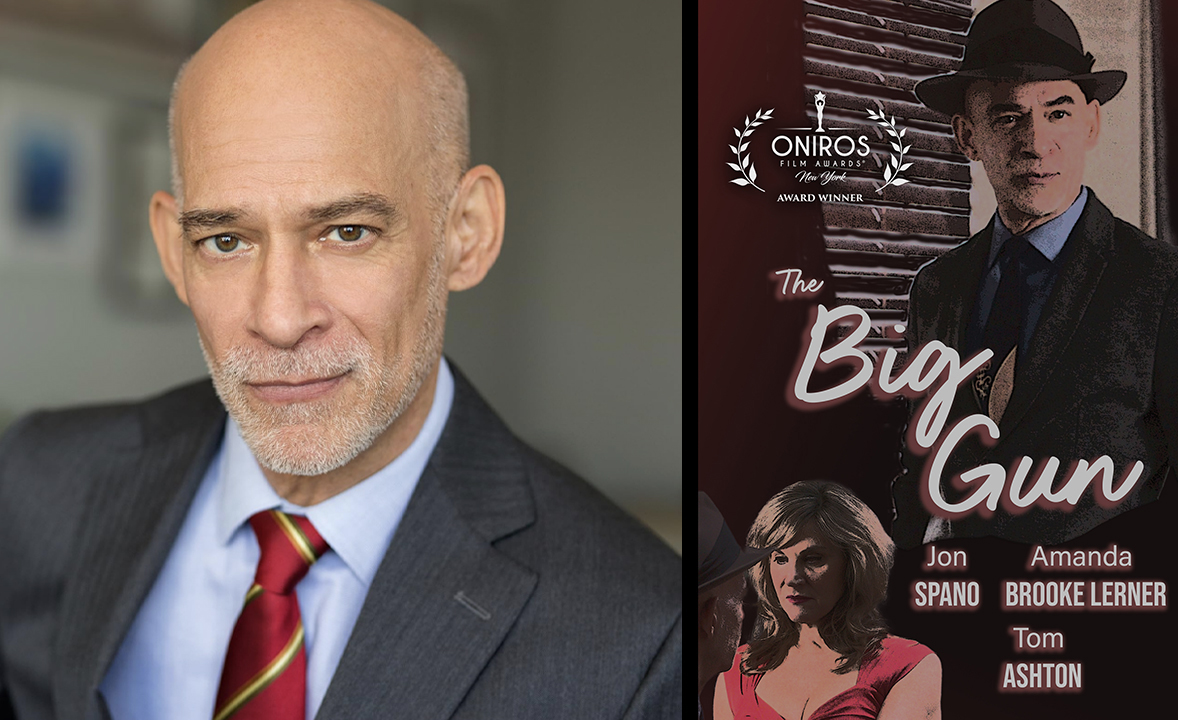
Jon Spano, lead actor of the short film ‘The Big Gun‘ – www.jonspano.com
3. You are also the writer and producer of the short film The Big Gun. When did you start working on this project?
My first draft was late 2022. We filmed Spring 2023. I was mortified seeing the first rough cuts. But our brilliant DP and editor, Katy Frame, honed it. I actually found musical underscoring and made the selections for the chosen tracks to align with specific film sequences. I’d never done anything like that before. Katy then edited those selections into the film. That’s when the movie came together. With the music driving the scene in its intended direction.
I was anxious on the day filming. The agitation is evident in my performance. I don’t like it. Like many actors, I hate watching myself, but the best way to learn is by watching your mistakes. I wish I’d taken a valium first…
4. You’re a big fan of noir films. Can you tell us more about your connection to this genre?
Goes back to being a kid and all that TV stuff. The old black-and-whites on a black-and-white screen till about 1972, when my Aunt Frances bought us a color TV. Loved the mobster flicks, too, like James Cagney’s Angels With Dirty Faces. My first detective Noir was probably something mediocre, because a lot of them are really bad, churned out like cheap beer that audiences of the time lapped up. I saw the gems and grandaddies of Noir over time. The Maltese Falcon, Sunset Boulevard… New York used to have a lot of retro houses. I saw In a Lonely Place at The Regency at 68th and Broadway. Long gone. That film stars Humphrey Bogart and Gloria Grahame. Bogart’s character is a self-indulgent writer, a misogynist. Yet thoroughly captivating. He loses in the end. Grahame, a perfect femme fatale in other Noirs, is so loveable and vulnerable in this film.
I like the darkness and shadows of Noir. I like desperately troubled souls fighting for something they think will change their mundane lives and make them happy. The characters take incredible risks to get what they want, but ambition with ill-motive never ends well.
5. Was there a specific film that influenced you while preparing this project?
Always loved The Maltese Falcon, with its convoluted plot, which I saw at Film Forum shortly after moving here. At the start of the film, Sam Spade (Bogart) seems nearly indifferent to his partner’s death. But by the end, that’s what his journey’s been all about: nailing his partner’s killer. The other characters care only about the falcon. It’s all superfluous, for everyone except Spade.
Chinatown echoes of lot of Falcon in that regard. Jake Gittes (Jack Nicholson) investigates a murder, but then all this other shit happens. Political corruption. Romance. False identities. Incest. The more Gittes snoops and the closer he gets to solving the murder, the more chaos and tragedy ensue.
Mulholland Drive, a neo-Noir that turned the genre on its head for a contemporary audience, is a favorite. There’s a passing reference to it in The Big Gun, and the midpoint time-shift in my film is a tepid homage to David Lynch’s masterwork.
There’s also 1978’s The Cheap Detective, a rather dumb parody with an all-star cast starring Peter Falk. All the stock characters of the Hollywood genre, embodied by a stellar cast, with insider nods to Noir’s golden nuggets: To Have And Have Not; Double Indemnity, Falcon… At the time, I’d never seen parody before; didn’t know what it was.
The Big Gun is a two-character micro-version of all those films with a hyper-real dramatic plot twist. Gumshoe Noir can be its own self-parody. I wanted to heighten the parody element, but act it (mostly) for real.
6. The film relies heavily on strong performances. How did you choose the actors?
I auditioned only a handful of wonderfully talented female actors. I knew Amanda Brooke Lerner but hadn’t worked with her… just had a feeling she was right for the role and that we’d have chemistry. Our terrific director Blaze Mancillas agreed. In a cameo role, I chose Tom Ashton because he’s a friend who’s such a pro. Just the best person to work with and a talented musician to boot. I love our brief, romantic, silent scene together.
7. I loved the switch between the old-school black-and-white noir to a more modern cinematography. Can you tell us more about that creative decision?
In addition to what was said about Mulholland Drive, I wanted to do something the audience wouldn’t anticipate. An inexplicable immersion from the existing world (like the turn of the cube in Mulholland) into a new one, where the same story is told in a more brutal way, where the first half is more fantasy and comedy, and the second half, more real and dramatic.
The switch seemed to shake things up a bit and I consciously belied my own sense of logic and structure to see if it would work. There’s also a few direct-to-camera beats that add another contemporary layer to the film, so The Big Gun is a bit of a mash-up.
8. Can you tell us more about the team involved in the production of your film?
Over four days, a crew of seven worked on a single indoor set, which gives the film a theatrical feel. I worked with Blaze and Katy as a co-star on several performance videos and liked their vibe and professionalism. The AD was Paulina Knaack, a beautiful, talented filmmaker (actor, singer…). Jessica Phillips Gaetano, a godsend, was our AC. Era Visina, a true visionary, did hair and makeup. Debbe Duperrieu, a good friend with an impressive resume, was costume coordinator and offered her services gratis for our shoot, a true gift in a business where the hands are out for money. On sound was Ian Hunter.
Everyone performed multiple jobs. We shot at Reel Arc’s warehouse space at Brooklyn Navy Yard. Because most of the equipment was in-house, we didn’t have daily set-up, break-down, pack-up, storing or transporting, and then rebuilding all that every day… that just saved SO much time. After financing, time is the most important factor of a shoot. Plan, plan, plan in advance and leave room for the unexpected. Because it WILL happen.
9. Do you have any anecdotes from the filming process that you’d like to share with us?
Amanda and I were filming a scene where we each kept flubbing lines. But because The Big Gun’s dialogue is very stylized and musical, it had to be word-for-word and not improvised. But I’d screw up, then Amanda would, or it would be something technical with the lighting or blocking. Six, seven, eight times… I got frustrated. Amanda got frustrated. I think Katy and Blaze did, too, but they were very patient. In hindsight, it was probably only twenty minutes of time, but it felt interminable. It’s the scene where we’re arguing and momentum is building to the midpoint climax. The final cut of this scene is one of my favorite beats. The scene needed that intensity; it wouldn’t have landed if we hadn’t had that real-time frustration building. We would have maybe acted what we planned, or some acting-process version of the scene. Instead, we had actual life, actual emotion fueling the moment as our guide. There’s a lesson in there somewhere. Not sure what, exactly. Maybe something about surrendering to imperfection so that the idea of delivering a perfect performance can get flushed down the drain.
10. What’s the best piece of advice you’ve ever received? And what advice would you give to an aspiring filmmaker?
Phil Black, my first dance teacher, was pleased with my progress in a short timeframe. He told me I knew that time waits for no one, quoting, I think, Chaucer. Through Phil, I became hyper-aware of how quickly time moves, of how fast aging occurs, and of the inevitability of death, a theme which permeates my playwriting.
I develop projects, not slowly, but steadily. Don’t like to dawdle but also hate to rush. Rushing is not the same as pacing. I finish ahead of deadlines. I don’t work with people who wait till the last minute to meet one, even if they ultimately deliver the goods. Too stressful, too self-involved. No one needs an “it’s all about me” personality in development or on set.
My advice to younger filmmakers is to step out of your comfort zone. In art and in life; for a true artist the two are inseparable. That includes not relying on the protections of your parents to sustain you. Be more self-reliant. Support yourself no matter how hard. Make mistakes. Take risks. Work crappy jobs. Clean apartments. Wait tables. Be a barista for a year. All those jobs taught me how humanity really behaves. From cruel to beautiful and everything in between. That’s important to experience. To rise above the dark side of human nature, to take whatever pain we experience and turn it into strength. It’s also, I think, the foundation of an artist’s soul. No one creates great art by living a happy, easy, comfortable life.
I’m weary of award winners always thanking their rich, well-connected mommies and daddies for their success. I want to see struggling people succeed. Jared Leto thanked his mother when he won his Oscar, but his mother was a single mom, raising Leto and his siblings. They were poor, lived out of a truck for a while. His biological father left them and later committed suicide. Out of hardship and tragedy, he made art. I don’t understand people berating his performance in House of Gucci. “Didn’t know it was him!” they lamented. “Didn’t even recognize him!” they jeered. I mean, isn’t that the fucking job?
11. What kind of films would you like to make in the future? Do you have a dream project you’d like to work on one day?
I love period pieces. Most films on the festival circuit are personal films. So I should keep that in mind for my next film, either adapting one of my short plays to film or creating something new. The Big Gun is not a deeply emotional or personal film but a piece of entertainment. We’ve been rejected from a lot of festivals and accepted by a handful, so inclusion in the Oniros Film Awards is a real honor. Audiences have unanimously loved the film. I love to hear people laugh. It’s a film best viewed with an audience.
12. What’s next for you? What are you currently working on?
Developing my full-length screenplay, Muskego Lake, a mother-daughter story that takes place in a Wisconsin resort. I’m also writing a ten-minute short for Reel Arc’s youtube channel. I’ve written about 250 scenes for Reel Arc, a production company that creates performance video clips and short films for actors.
As an actor, I’m currently working on getting reps who believe in me. LOL. Having a devil of a time finding that. But acting is so much fun. It’s the best “hard fun” that exists. One of my happiest days ever was working into the wee hours of the morning on a Rob-Lowe produced docu-drama about the Boston Tea Party. I was exhausted but completely fulfilled. It was also a treat to work with Drew Barrymore on a Super Bowl promo for Paramount at the beginning of the year.
I’m outlining a piece called Dancing on Ashes where I play a choreographer repressing his grief and will film a few dance sequences for that. I can lend both world-weariness and wonder to a role of an aging artist who’s experienced great loss – as we all have – yet who’s grateful for life’s journey for as long he can muster the stamina to continue embracing it. Whose world-view is tinged with a dose of cynicism, a dash of savvy, and a dollop of hope.
It’s the hope that gets you through. Thank you, Alice!
